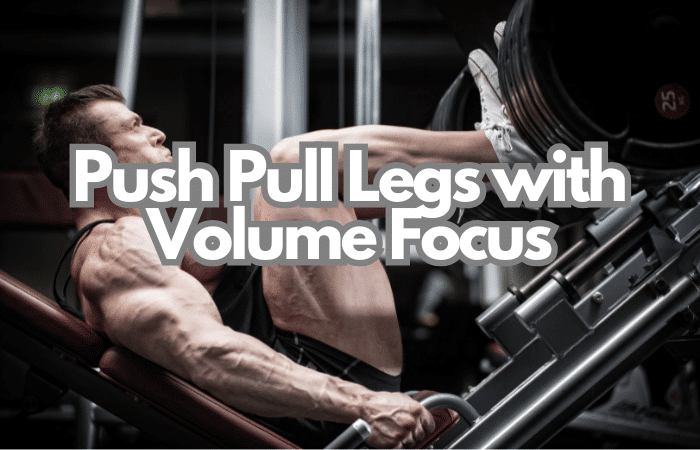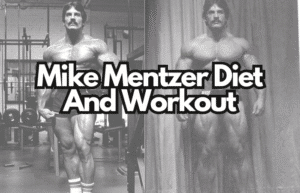The Push Pull Legs (PPL) split is one of the most efficient and widely respected training routines in the fitness world. I like it, and I know you will too once you give it a try and see the results. As It offers structure, recovery balance, and freedom to scale. And when you shift your focus toward volume, this classic split transforms into a hypertrophy powerhouse. I tend to recommend it for anyone who is looking to gain muscle, as PPL with volume emphasis is a proven way to stimulate growth and make serious gains.
First: Why Volume Matters
Training volume, the total number of sets and reps per muscle group per week, is one of the most important drivers of muscle hypertrophy. Research consistently shows that working muscles with sufficient weekly volume (10–20 sets per muscle group) leads to better size gains, especially when progressive overload and proper recovery are in place.
A volume-focused PPL split lets you:
- Target each muscle group at least twice per week
- Accumulate quality volume across different movement patterns
- Optimize recovery windows with strategic rotation
- Customize intensity (RPE/RIR) without excessive fatigue
Structure of the Volume-Focused PPL
The week is broken into three core movement days, ideally repeated twice per week (6-day rotation). Here's how I break it down:
- Push Day: Chest, Shoulders (Front/Side), Triceps
- Pull Day: Back, Rear Delts, Biceps
- Leg Day: Quads, Hamstrings, Glutes, Calves
Each session contains high-quality volume, emphasizing moderate rep ranges (8–15) with occasional heavier sets (5–8) and lighter, high-rep finishers (15–20). Tempo and time under tension can also be adjusted to increase stimulus without overreliance on load.
Sample Weekly Schedule
Day 1 – Push (Volume Focus)
- Bench Press – 4 sets × 6–8 reps
- Dumbbell Shoulder Press – 4 sets × 8–10
- Incline Dumbbell Press – 3 sets × 10–12
- Lateral Raises – 4 sets × 15–20
- Overhead Cable Triceps Extension – 3 sets × 12–15
- Triceps Dips (bodyweight or assisted) – 3 sets to failure
Day 2 – Pull (Volume Focus)
- Pull-Ups – 4 sets × 6–10
- Barbell Row – 4 sets × 8–10
- Seated Cable Row – 3 sets × 10–12
- Dumbbell Rear Delt Fly – 3 sets × 15–20
- Barbell Curl – 3 sets × 8–10
- Preacher Curl or Cable Curl – 3 sets × 12–15
Day 3 – Legs (Volume Focus)
- Back Squat – 4 sets × 6–8
- Romanian Deadlift – 4 sets × 8–10
- Walking Lunges – 3 sets × 12 reps per leg
- Leg Press – 3 sets × 12–15
- Leg Curl (machine) – 3 sets × 12–15
- Standing Calf Raises – 4 sets × 15–20
Day 4 – Push (Variation)
- Overhead Press (Barbell) – 4 sets × 6–8
- Incline Barbell Press – 4 sets × 8–10
- Machine Chest Press – 3 sets × 12–15
- Cable Lateral Raise – 3 sets × 15–20
- Skull Crushers – 3 sets × 10–12
- Triceps Pushdown – 3 sets × 15
Day 5 – Pull (Variation)
- Chin-Ups – 4 sets × 6–10
- T-Bar Row – 4 sets × 8–10
- Lat Pulldown (Wide Grip) – 3 sets × 12
- Reverse Pec Deck – 3 sets × 15
- Hammer Curl – 3 sets × 10–12
- Concentration Curl – 3 sets × 15
Day 6 – Legs (Variation)
- Front Squat – 4 sets × 6–8
- Dumbbell Step-Ups – 3 sets × 10 per leg
- Leg Extension – 3 sets × 15
- Lying Leg Curl – 3 sets × 15
- Seated Calf Raises – 4 sets × 20
Day 7 – Rest or Active Recovery
Light cardio, stretching, mobility, or full rest.
- Mike Mentzer| Bio, Daily Routine, Diet and Workout Plan
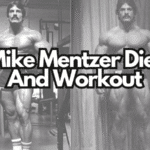
- Push Pull Legs with Volume Focus
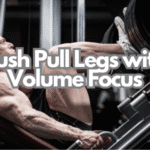
- Zottman Curl Exercise Guide
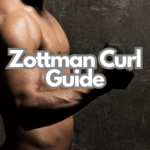
- Maximizing Your Gym Confidence: Tips for Feeling Great in the Gym

- Rad 150 Vs Rad 140: Which Is The Better SARM?
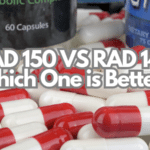
Is Push Pull Legs Really That Effective for Volume?
Short answer: Yes, when done right, it’s incredibly effective.
The Push Pull Legs (PPL) split isn’t just popular because fitness influencers hype it up. It’s stood the test of time because it’s built on simple, smart training logic. You divide your workouts by movement patterns, not by arbitrary muscle groups, which gives your body a more natural and balanced workload. And when you dial in the training volume, it becomes a legitimate growth machine. No fancy, weird exercises. Grab a set of dumbbells at your local gym, or even at home and get going.
Why It Works for Volume
The magic of PPL for volume lies in how often and efficiently you can hit each muscle group. Unlike a bro split where you train chest once a week and wait seven days for another round, a volume-focused PPL lets you train each major muscle group twice per week, often the sweet spot for hypertrophy.
You’re also spreading your sets across multiple sessions. So instead of crushing your chest with 20 sets in one brutal workout, you’re doing 10 sets twice per week. That’s better for recovery, better for consistency, and better for muscle growth. Add to that the flexibility of exercise selection, progressive overload, and variety (e.g. heavy compounds, isolation finishers, time under tension), and you’ve got a routine that scales with your progress.
But It’s Not Magic
Of course, nothing works if it’s poorly executed. PPL only becomes effective for volume when:
- You’re actually tracking total weekly volume per muscle group
- You’re recovering properly (sleep, nutrition, rest days)
- You’re adjusting intensity and not just chasing reps for the sake of it
Who is Push Pull Legs with Volume Focus For?
Push Pull Legs with a volume focus is best suited for intermediate to advanced lifters who have already built a solid foundation and are looking to take their hypertrophy training to the next level.
If you've been consistent in the gym for at least 6–12 months and feel comfortable with proper form on compound lifts, this split offers the structure and intensity needed to drive serious muscle growth. I'd say it is ideal for those who can commit to training 5–6 days per week, prioritize recovery, and track their progress. This method is especially effective for individuals aiming to maximize training volume in a strategic, sustainable way without overwhelming any single workout. If your primary goal is size, balance, and a more targeted approach to muscle development, this training style delivers.
Food While Building Volume: Fueling Muscle Growth the Right Way
If you’re training with a high-volume routine like Push Pull Legs, your nutrition needs to match the effort. To build size effectively, you must be in a controlled calorie surplus: around 250–500 extra calories per day, to support recovery and muscle repair without excessive fat gain.
Protein is your foundation: aim for 1.6–2.2g per kg of body weight daily, spread across 4–6 meals. Include lean meats, eggs, dairy, legumes, or protein shakes to keep muscle protein synthesis elevated. Carbs are your training fuel, helping you maintain performance and recover faster. Focus on complex sources like oats, rice, potatoes, and fruit, especially around workouts. Fats support hormones, so keep healthy sources like olive oil, nuts, and fatty fish in your diet, just stay within 20–30% of total calories to avoid overdoing it.
Hydration, nutrient timing, and meal consistency all matter too. Stay well-hydrated, fuel up before training, and don’t miss meals. Training hard without eating smart means leaving gains on the table. Eat with intent, recover fully, and let your food do the heavy lifting between sessions. And if you need to add supplements, Creatine and protein powder is more than enough. You won't need any other supplements, no matter what your favorite infleuncer says.
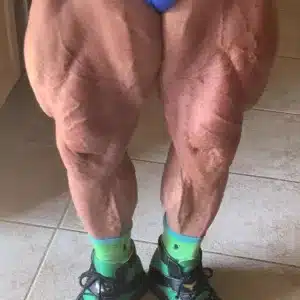
It's a Wrap
The Push Pull Legs split with volume focus is ideal for intermediate to advanced trainees who want to build serious size while maintaining balance and recoverability. It’s highly modular so you can rotate exercises, tweak intensities, or add advanced techniques like drop sets or tempo training depending on your goals.
The key is consistency and tracking volume over time. With patience and a well-structured progression, this version of the PPL split delivers results that speak for themselves: in both muscle size and training satisfaction.
